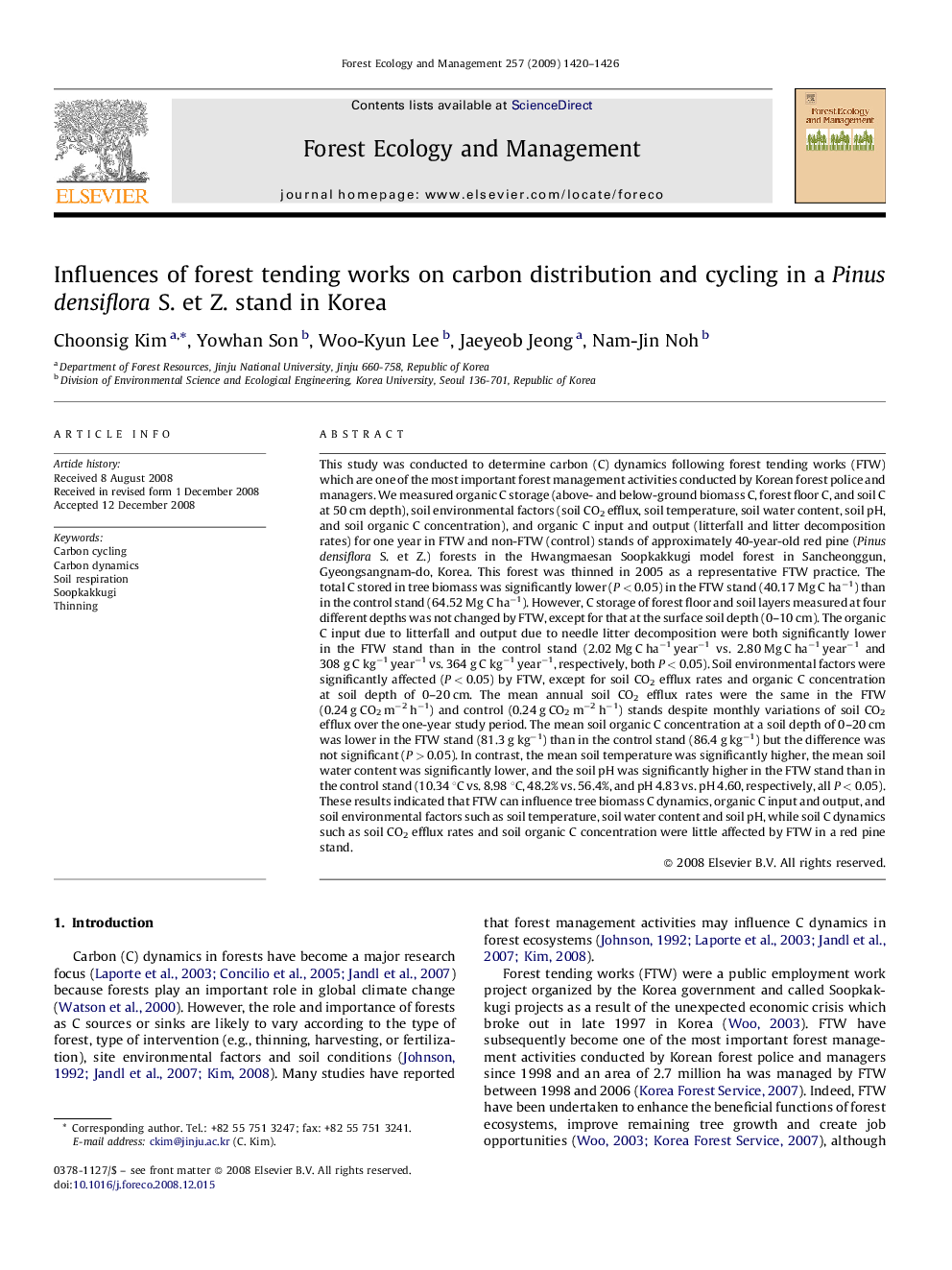| کد مقاله | کد نشریه | سال انتشار | مقاله انگلیسی | نسخه تمام متن |
|---|---|---|---|---|
| 88929 | 159327 | 2009 | 7 صفحه PDF | دانلود رایگان |

This study was conducted to determine carbon (C) dynamics following forest tending works (FTW) which are one of the most important forest management activities conducted by Korean forest police and managers. We measured organic C storage (above- and below-ground biomass C, forest floor C, and soil C at 50 cm depth), soil environmental factors (soil CO2 efflux, soil temperature, soil water content, soil pH, and soil organic C concentration), and organic C input and output (litterfall and litter decomposition rates) for one year in FTW and non-FTW (control) stands of approximately 40-year-old red pine (Pinus densiflora S. et Z.) forests in the Hwangmaesan Soopkakkugi model forest in Sancheonggun, Gyeongsangnam-do, Korea. This forest was thinned in 2005 as a representative FTW practice. The total C stored in tree biomass was significantly lower (P < 0.05) in the FTW stand (40.17 Mg C ha−1) than in the control stand (64.52 Mg C ha−1). However, C storage of forest floor and soil layers measured at four different depths was not changed by FTW, except for that at the surface soil depth (0–10 cm). The organic C input due to litterfall and output due to needle litter decomposition were both significantly lower in the FTW stand than in the control stand (2.02 Mg C ha−1 year−1 vs. 2.80 Mg C ha−1 year−1 and 308 g C kg−1 year−1 vs. 364 g C kg−1 year−1, respectively, both P < 0.05). Soil environmental factors were significantly affected (P < 0.05) by FTW, except for soil CO2 efflux rates and organic C concentration at soil depth of 0–20 cm. The mean annual soil CO2 efflux rates were the same in the FTW (0.24 g CO2 m−2 h−1) and control (0.24 g CO2 m−2 h−1) stands despite monthly variations of soil CO2 efflux over the one-year study period. The mean soil organic C concentration at a soil depth of 0–20 cm was lower in the FTW stand (81.3 g kg−1) than in the control stand (86.4 g kg−1) but the difference was not significant (P > 0.05). In contrast, the mean soil temperature was significantly higher, the mean soil water content was significantly lower, and the soil pH was significantly higher in the FTW stand than in the control stand (10.34 °C vs. 8.98 °C, 48.2% vs. 56.4%, and pH 4.83 vs. pH 4.60, respectively, all P < 0.05). These results indicated that FTW can influence tree biomass C dynamics, organic C input and output, and soil environmental factors such as soil temperature, soil water content and soil pH, while soil C dynamics such as soil CO2 efflux rates and soil organic C concentration were little affected by FTW in a red pine stand.
Journal: Forest Ecology and Management - Volume 257, Issue 5, 28 February 2009, Pages 1420–1426